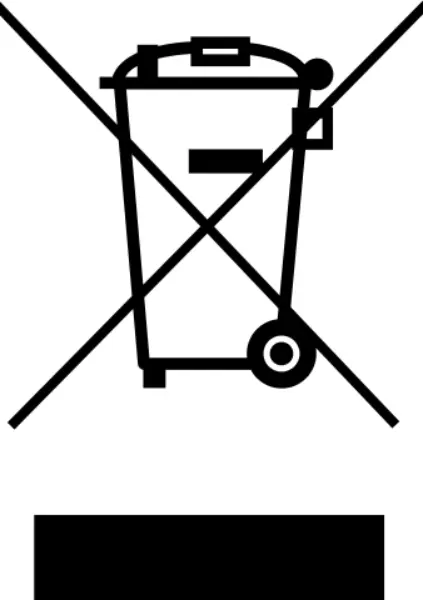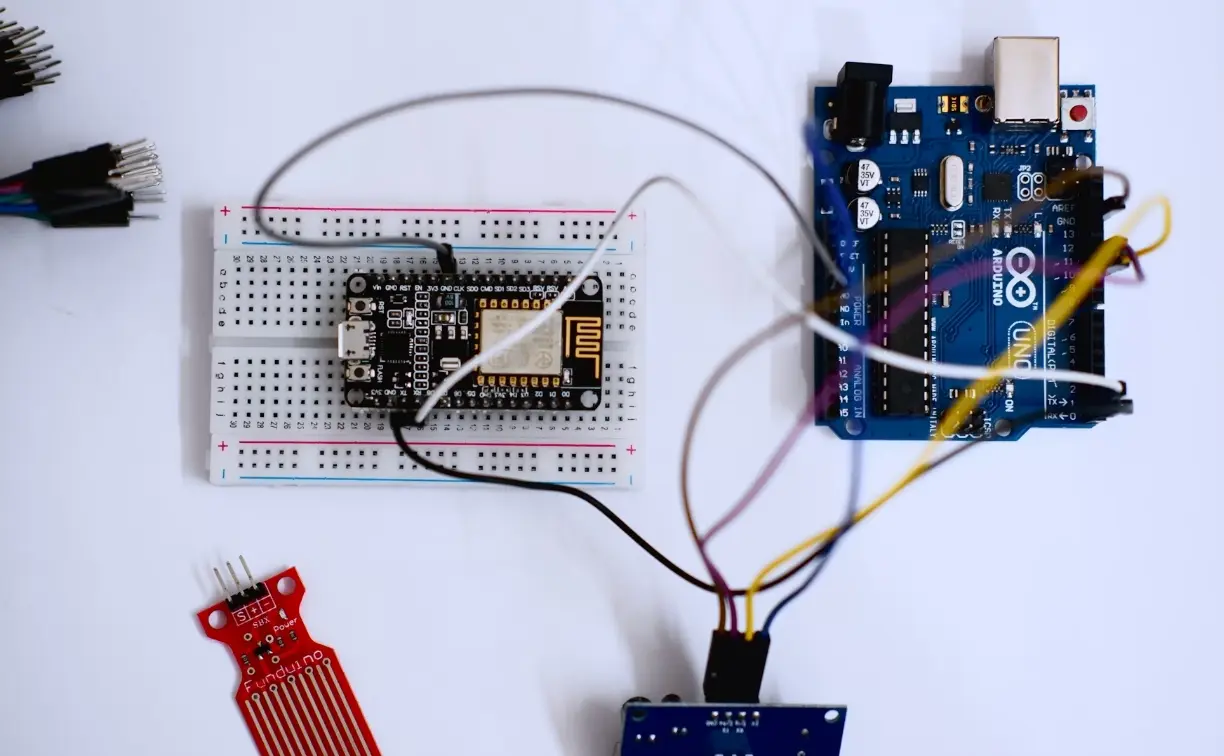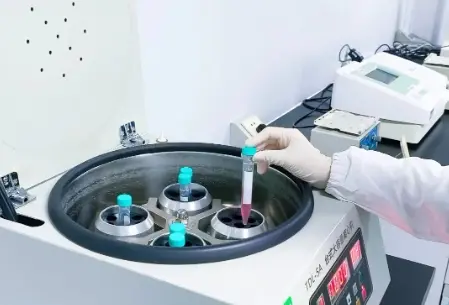
What is the German WEEE Certification?
What is the German WEEE?
The European Committee for Electrotechnical Standardization (CENELEC) announced the latest version of the EN 50419:2022 document. This document specifies the marking of electrical and electronic equipment (EEE) to minimize the disposal of waste EEE as unsorted waste and to promote its separate collection. EN 50419:2022 was published on December 6, 2022, and the standard was issued on June 6, 2023. The old version of the standard (EN 50419:2006) will be withdrawn on June 6, 2025.
WEEE stands for Waste of Electrical and Electronic Equipment, which, as the name implies, is a directive in Europe regarding the recycling requirements for discarded electronic appliances, aiming to promote a circular economy and improve resource efficiency.
European Union (EU) laws require platforms like Amazon, AliExpress, and eBay to notify foreign e-commerce sellers registered on their platforms about electronic equipment recycling.
Definition of Manufacturers:
In addition to the definition in the directive, if you sell goods in Germany and your company is not located in Germany, you are considered the manufacturer of the electrical and electronic equipment you ship to Germany. Even if these products bear the manufacturer’s brand and the manufacturer is already registered with the EAR Foundation, you are still considered the manufacturer of the electrical and electronic equipment shipped to Germany.
Consequences of Not Registering for WEEE:
- Platform removal
- Goods detained and destroyed by customs
- Legal disputes from competitor reports
- Fines up to €100,000 or even two years of imprisonment by regulatory authorities.
Products Required to Bear the WEEE Mark:
Category 1:
Heat exchangers, such as refrigerators, freezers, air conditioners, heat pumps, and dehumidifiers that integrate circuit appliances, using substances other than water.
Category 2:
Screens, such as televisions, computers, digital photo frames, and monitors with screens larger than 100 square centimeters.
Category 3:
Lamps, such as fluorescent tubes and discharge lamps used in lighting facilities.
Category 4:
Large appliances, such as washing machines, ovens, copiers, electric stoves, and medical equipment, where any external dimension exceeds 50 cm.
Category 5:
Small appliances, such as microwaves, scales, watches, irons, and cameras, with any external dimension less than 50 cm.
Category 6:
Small communication devices, such as mobile phones, routers, card readers, and scanners, related to mobile, transmission, processing, storage, and presentation of information (IT equipment) and electronic devices.
Compliance Declaration for German WEEE:
1. Accurate Form Submission:
- Should include business information, types, and quantities of electronic products sold.
2. Complete Documentation:
- Proof documents, including the German weee registration certificate, invoices, and logistics documents.
3. Timely Update of Reporting Information:
- Companies must update their reporting information if there are changes in sales to ensure that government departments are aware of the latest status and can provide necessary support and assistance.
4. Compliance with Relevant Laws and Regulations:
- The reporting process must comply with German laws and regulations, without providing false information or concealing important facts, or face severe legal consequences and fines.
Necessary Documents for WEEE Registration:
- Compliance information form (filled out by the service provider)
- Product images with logos and instruction manuals
- Scanned business license
Compliance Requirements for WEEE:
- The European Parliament and Council Directive 97/7/EC of May 20, 1997.
- Registration with the compliance management organization EAR to obtain a unique WEEE number. Sellers must display the WEEE number on the platform and mark the WEEE logo on the product. Monthly market input declarations should be made to service providers to fulfill recycling obligations. Compliance with German WEEE does not require retroactive action, but registration with EAR must be completed before shipping (large energy-consuming appliances like refrigerators and washing machines must be labeled with energy efficiency ratings).
Responsibilities of WEEE Electrical and Electronic Equipment Producers or Their Authorized Representatives:
- Design products that are easy to disassemble.
- Periodically report to the German WEEE authorities (monthly sales, recycling reports, and annual recycling reports).
WEEE Recycling Requirements:
- Collection and recycling of WEEE.
- Appointment of authorized representatives for organizations without a subsidiary in Germany.
- Provide a so-called bankruptcy protection guarantee for B2C product manufacturers.
Additionally, distributors and remote sellers with sales or warehouse areas exceeding 400 square meters must accept WEEE returns from consumers free of charge.
Simply put, sellers must offer waste electrical and electronic equipment recycling services to buyers:
- Small Waste Equipment (all external dimensions less than 25 cm):
- Sellers must recycle such items even if buyers purchased the equipment from other sellers or if the equipment type is not within the seller’s range of goods (“0:1 recycling”).
- All Other Equipment:
- Sellers are only required to recycle old equipment from buyers who purchase similar new equipment from them (“1:1 recycling”).
The 0:1 and 1:1 recycling obligations only apply to sellers with a sales area exceeding 400 square meters in Germany for storing/selling electrical and electronic equipment.
All sellers with recycling obligations must:
- Register their recycling system with the EAR Foundation (providing their name, address, and details of the recycling system).
- Report the quantities of electrical and electronic equipment recycled or shipped outside the member state/region to the EAR Foundation annually.
WEEE requires product marking as follows:
- The WEEE directive mandates that product markings comply with EN50419 requirements, consisting of a crossed-out wheeled bin symbol.

- The minimum height of the symbol is 7 mm, and it must be visibly, legibly, and indelibly displayed on the product's exterior.
Note: The black solid line below the trash can must also be displayed, with a height of no less than 1 mm.
Amazon's Compliance Requirements for German WEEE:
- Electrical and electronic equipment (EEE) - effective from January 1, 2023, for all products in the electrical and electronic equipment category.
- Electrical and electronic equipment: WEEE-Reg.-Nr.DE can serve as proof of compliance.
German WEEE Authorized Representative System Requirements:
Under the German Electrical and Electronic Equipment Act (ElektroG = German WEEE transposition), since October 24, 2015, manufacturers without branches in Germany cannot register or continue to register with the Foundation EAR (= German WEEE Registration Committee).
- Relevant manufacturers already registered without branches in Germany need to re-register. This includes appointing an authorized representative in Germany and notifying the Foundation EAR as the competent authority.
In simple terms, overseas buyers must appoint a German local representative authorized by EAR to complete WEEE registration and subsequent compliance maintenance.
How to Confirm Your Product Registration Success:
- Check the WEEE website:
https://www.ear-system.de/ear-verzeichnis/hersteller#no-back
Additional Notes:
1. German WEEE is effective for a calendar year. Regardless of when registered in the year, a full year's fee must be paid, and it will expire on December 31, 2024. In 2025, sellers need to contact the service provider timely to renew the certificate.
2. After obtaining a registration number, pre-declarations and annual reports are required. Service providers need to notify for timely renewal to avoid penalties for overdue declarations, leading to the deactivation of WEEE-related ASINs on the platform.
Email:hello@jjrlab.com
Write your message here and send it to us
 FCC Certification Fees for Handheld Fans
FCC Certification Fees for Handheld Fans
 FCC Certification Testing for Smart Lighting Produ
FCC Certification Testing for Smart Lighting Produ
 What is the ETSI EN 303 645 Testing Standard?
What is the ETSI EN 303 645 Testing Standard?
 UL Compliance and ETL Certification for LED Lighti
UL Compliance and ETL Certification for LED Lighti
 What is the IEC 60598 Standard?
What is the IEC 60598 Standard?
 What is the Canada IC Logo?
What is the Canada IC Logo?
 EMC Pre Compliance Testing
EMC Pre Compliance Testing
 PAHs Testing (Food and Textile)
PAHs Testing (Food and Textile)
Leave us a message
24-hour online customer service at any time to respond, so that you worry!




